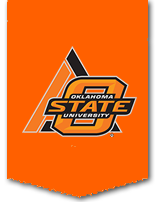FAPC co-hosts Good Laboratory Practices Workshop
By Allison Richard
STILLWATER, Okla. – The Food & Agricultural Products Center and the Oklahoma Agricultural Experiment Station hosted a Good Laboratory Practices Workshop May 11 and 12, 2004.
Seventy participants participated in a two-day workshop concerning GLPs, said Guadalupe Davila-El Rassi, FAPC analytical chemist and workshop chair. The topics included quality assurance versus quality control, standard operating procedures, raw data and documentation, protocols, final report requirements, acceptance/rejection of data, technical review of data and much more.
"The GLP Workshop was designed to empower laboratory personnel with practical scientific skills and attitude to carry out their research and to promote the quality and validity of research work data," Davila-El Rassi said. "The course included vast information about regulations as well as examples."
Deborah Garvin, president of both Pacific Rim Consulting, Inc. and West Coast Quality Training Institute, taught the workshop. Garvin holds a master's degree in genetics and specializes in conducting audits and inspections of FDA/EPA/OECD GLP regulated studies and animal health clinical studies.
Garvin shared some of her GLP philosophies to the group.
"Minimum GLP compliance does not guarantee good science," Garvin said. "Meeting the 'letter of the law' of GLP does not necessarily meet the 'intent' of the GLPs."
Garvin also said GLP systems must be simple, logical and straightforward to be successful, and studies or data are only as good as the ability to reproduce or reconstruct them.
"Try writing up someone else's research, and it will make you a believer in GLPs," Garvin said.
The GLP regulations were set into place to control "sloppy and fraudulent" science. Garvin said some of the reasons GLPs are essential in today's environment include everyone makes mistakes, there is a higher level of accountability for researchers or organizations, the public opposition to pesticides and genetic engineering and tighter budgets with less tolerance for mistakes.
Another subject discussed was quality assurance versus quality control. Garvin defined quality assurance as a system of activities whose purpose is to provide the producer or user of a produce or service the assurance so that it meets defined standards of quality. Quality control was defined as the overall system of activities whose purpose is to control the quality of a product or service so that it meets the needs of users.
"GLP quality assurance is not quality control," she said.
Examples of quality assurance are assuring protocols are followed, assuring personnel are properly trained and assuring deviations are documented and reported. Quality control examples include truthful evaluation of data, reviewing raw data for consistence between technicians and circumstances affecting study quality are detailed.
Garvin also explained the importance of standard operating procedures. SOPs help to establish consistency between scientists and procedures and provide study personnel with written instructions.
These procedures provide several benefits such as minimizing errors and repeats in reports, reducing time spent documenting routine procedures, justifying a company's position on certain issues and serving as guidelines in training new staff.
Garvin identified some terms and phrases to avoid when writing SOPs. These include periodically, timely, as needed, immediately, appropriate, adequate, approximately and frequently.
Furthermore, a protocol is a written plan describing a study's conduct. Sponsors, study directors, study personnel and management all use the protocols when conducting research and experiments.
Garvin defined the difference between protocols and SOPs.
"A protocol describes the overall study plan and requirements," she said. "SOPs provide details regarding how to carry out protocol requirements."
Changes can be made to protocols, but those changes must be documented, Garvin said. There are two ways to change a protocol, which include amendments and deviations.
Amendments are used for planned, permanent changes such as change in study design or addition of sites or methods. Deviations are used for unforeseen circumstances such as oversights, weather or failure to record observations.
The workshop concluded with an interactive exercise prompting the participants to think about how they can incorporate or improve GLPs and SOPs in their laboratory.
"The last session was an excellent conclusion to the workshop," Davila-El Rassi said. "Each research group was highly motivated to develop a unique plan to implement or improve GLP practices in their laboratory."
- ### -
Oklahoma State University, U.S. Department of Agriculture, State and Local Governments Cooperating. The Oklahoma Cooperative Extension Service offers its programs to all eligible persons regardless of race, color, national origin, religion, sex, age, disability, or status as a veteran, and is an equal opportunity employer.

